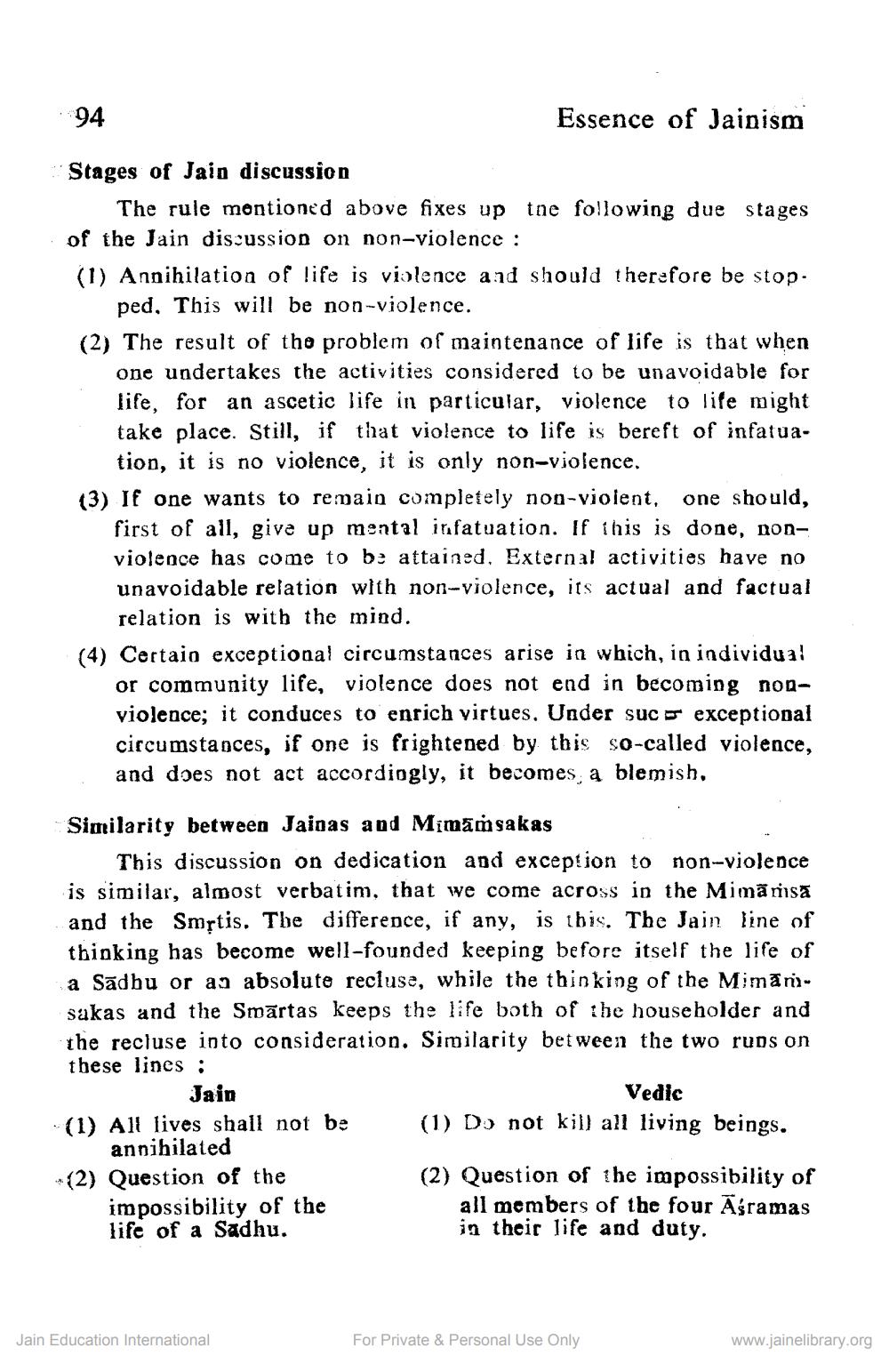________________
94
Essence of Jainism
Stages of Jain discussion
The rule mentioned above fixes up tne following due stages of the Jain discussion on non-violence : (1) Annihilation of life is violence and should therefore be stop.
ped. This will be non-violence. (2) The result of the problem of maintenance of life is that when
one undertakes the activities considered to be unavoidable for life, for an ascetic life in particular, violence to life might take place. Still, if that violence to life is bereft of infatua
tion, it is no violence, it is only non-violence. (3) If one wants to remain completely non-violent, one should,
first of all, give up mental infatuation. If this is done, nonviolence has come to be attained, External activities have no unavoidable relation with non-violence, its actual and factual
relation is with the mind. (4) Certaio exceptional circumstances arise in which, in individual
or community life, violence does not end in becoming nonviolence; it conduces to enrich virtues. Under sucs exceptional circumstances, if one is frightened by this so-called violence, and does not act accordiogly, it becomes a blemish.
Similarity between Jaioas and Mimamsakas
This discussion on dedication and exception to non-violence is similar, almost verbatim, that we come across in the Mimarisa and the Smrtis. The difference, if any, is this. The Jain line of thinking has become well-founded keeping before itself the life of a Sadbu or aa absolute recluse, while the thinking of the Mimārisakas and the Smārtas keeps the life both of the householder and the recluse into consideration. Similarity between the two runs on these lines : Jain
Vedic (1) All lives shall not be (1) Do not kill all living beings.
annihilated +(2) Question of the
(2) Question of the impossibility of impossibility of the
all members of the four Aśramas life of a Sadhu.
in their life and duty.
Jain Education International
For Private & Personal Use Only
www.jainelibrary.org




